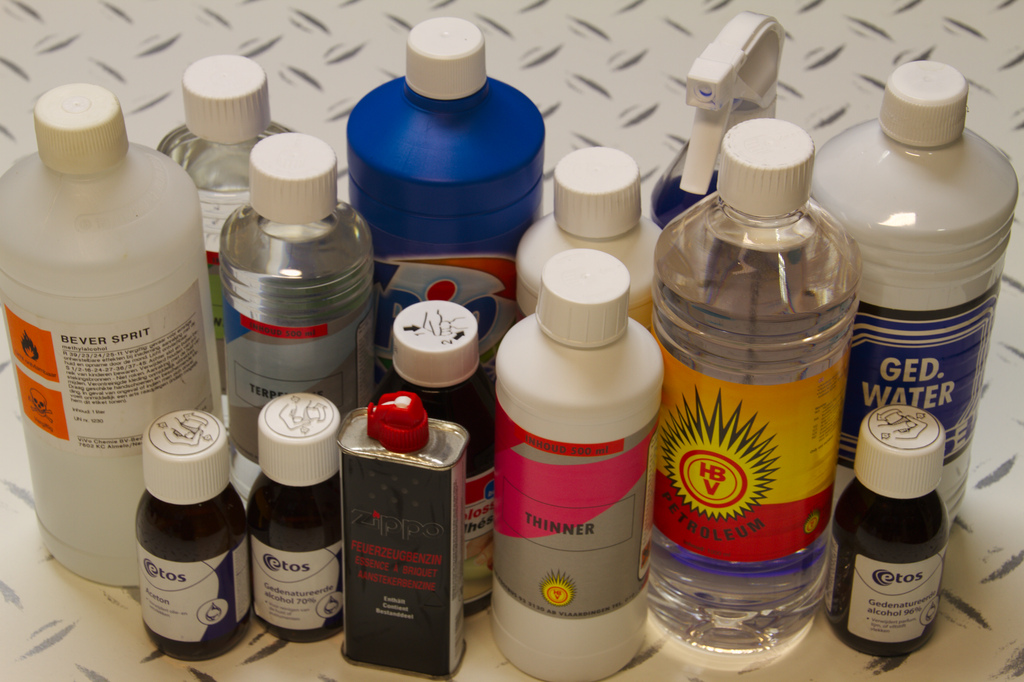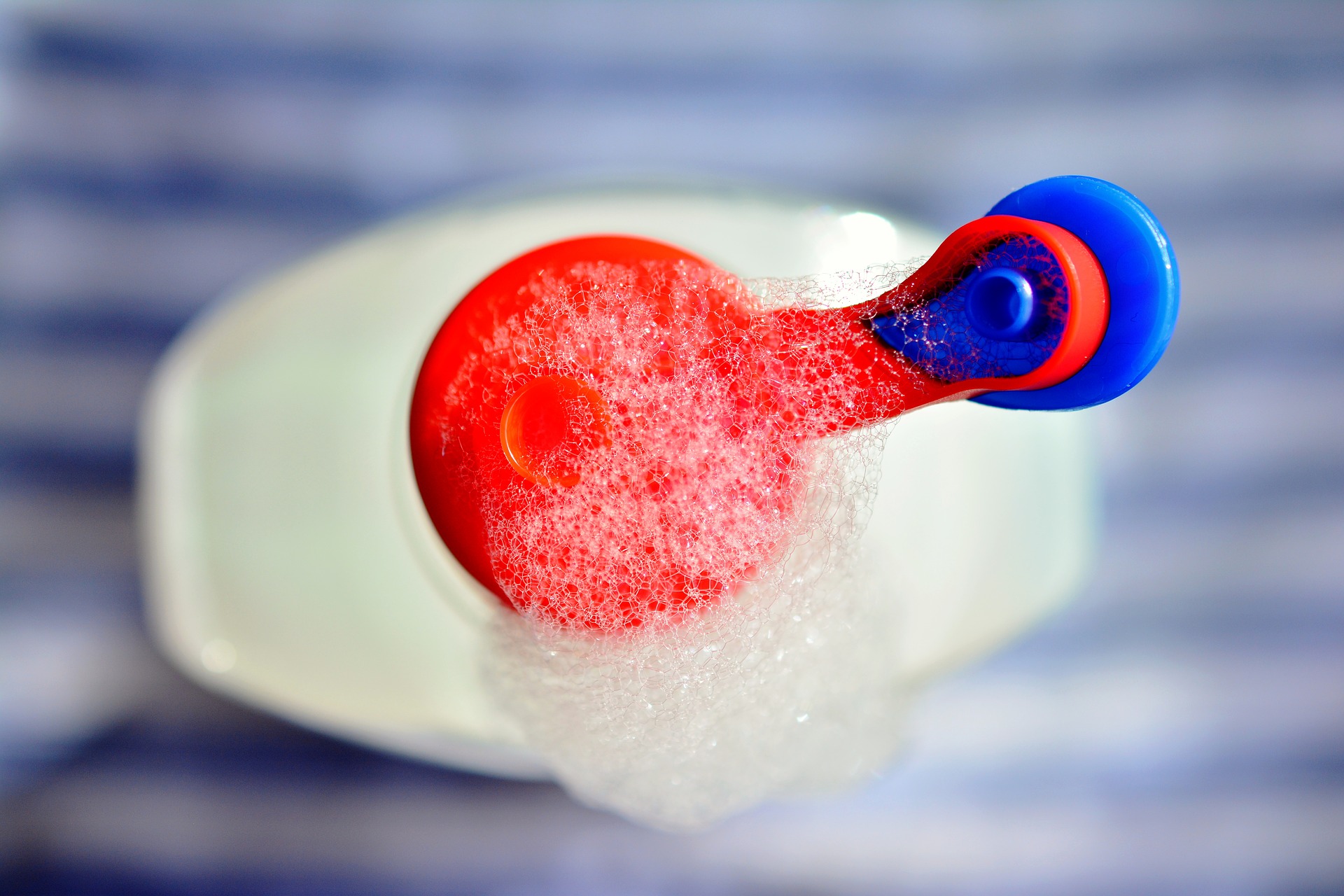Promoting safer disinfectants in the healthcare sector
Disinfectants are widely used in healthcare settings - they are essential to prevent cross contamination, outbreak of diseases, and hospital-acquired infections. Yet, the biocidal active substances that are so effective at disinfecting products, surfaces, and skin also pose a variety of potential hazards to human health and the environment. Health Care Without Harm (HCWH) Europe is coordinating the SAICM 2.0 project, which aims to combat these unintended hazards by promoting safer, more environmentally friendly disinfectants without compromising on hygienic and occupational health standards.
By expanding procurement and health professionals’ knowledge of the health and environmental impacts of disinfectants, they can align their procurement criteria with healthcare’s healing mission and reduce the risks associated with disinfectants. The SAICM 2.0 project, financed by the German Environmental Agency, builds upon the pioneering work of the Viennese Database for Disinfectants (WIDES) and aims to broaden its application to other countries.

Disinfectants’ health and environmental hazards
Recent studies indicate that biocidal active substances pose potential occupational health hazards, environmental threats, and can even contribute to the spread of antimicrobial resistance (AMR) – a global health threat.
The most reported occupational hazards related to the use of disinfectants are acute illnesses, respiratory issues (disinfectants can be sensitizing or irritant) and chronic obstructive pulmonary disease (COPD), skin problems, eye irritation, migraine, or other neurologic symptoms.1 2 Some disinfectant ingredients are also allergenic and have been identified as CMR (carcinogenic, mutagenic, and repro-toxic)3 or endocrine disrupting.4 5
In terms of environmental impact, certain disinfectants have adverse effects on the aquatic systems due to high aquatic toxicity and/or low biodegradability.6 7 Substituting these pollutants in the healthcare sector is therefore important to reduce the sector’s environmental burden on sewage treatment plants and surface waters.8 9
Recent studies have observed that multi-drug resistant pathogens such as bacteria Enterococcus faecium, Staphylococcus aureus, or Listeria monocytogenes10 are growing resistance to antimicrobial disinfectants commonly used to prevent them from spreading.
How to reduce the negative impact of disinfectants
In light of these risks, decontamination strategies that encourage the use of non-chemical solutions (for example heat or UV light) and prudent use of biocidal substances should be the first priority, while disinfectants with an overall low hazard potential should be preferred. This is not straightforward, however, and hospitals wishing to integrate a chemical substitution programme into their procurement strategy may encounter barriers such as lack of knowledge surrounding available choices or the toxicological properties of specific ingredients.11 Furthermore, it can be difficult to easily identify and choose Biocidal disinfectants that are less harmful to human health and the environment, as biocides cannot be awarded the EU Ecolabel (Art. 6.6).
Despite these challenges, substitution has been successfully demonstrated in The City of Vienna, Austria where access to information, improved regulation, and setting sustainability criteria for public procurement has changed the market for disinfectant products. Since 1998, the city administration has been purchasing goods and services following ecological considerations, and it has implemented the ÖkoKauf Wien programme (“Eco Purchase”) to support purchasing decisions. Among the tools provided is the WIDES disinfectants database, which helps procurers choose the most suitable product by comparing the hazard profiles of frequently used disinfectants available on the Austrian market. It is mandatory for the Vienna Hospital Association, all buildings of the Vienna City Administration, kindergartens, schools, and public baths in the city to use the WIDES database when procuring disinfectant products. Using the database, hospitals in Vienna are now avoiding products classified as potential CMRs; manufacturers have responded by changing the composition of their products to meet hospitals’ demand for less harmful substances.12
SAICM 2.0 Project
Through the SAICM 2.0 project HCWH Europe, together with the technical support of Manfred Klade (Chemist and Environmental Engineer), is expanding the number of database entries within WIDES as well as promoting and disseminating the database worldwide. An advisory expert working group also support the project.
 The primary phase of the project was a survey of over 80 healthcare facilities about their procurement and application of disinfectants; the results will be presented anonymously in an interim report. Half of the participating organisations also shared the safety data sheets of the disinfectants used and will receive a hazard analysis of those products. During the first hazard analysis, HCWH Europe identified that some of these products are suitable for substitution. Learn more about the hazard analysis here.
The primary phase of the project was a survey of over 80 healthcare facilities about their procurement and application of disinfectants; the results will be presented anonymously in an interim report. Half of the participating organisations also shared the safety data sheets of the disinfectants used and will receive a hazard analysis of those products. During the first hazard analysis, HCWH Europe identified that some of these products are suitable for substitution. Learn more about the hazard analysis here.
HCWH Europe is now following-up with selected surveyed facilities to produce a series of case studies highlighting challenges and best practices in substituting disinfectants. We are also supporting these facilities to find suitable alternative disinfectants and will conduct a second analysis to compare hazard emissions between these alternatives and the existing disinfectants identified for substitution.
How to identify alternatives: ingredients categorisation
To support participating organisations to conduct market research and identify potential alternatives, HCWH Europe has created a list of biocidal active ingredients used worldwide, categorised according to the project methodology for hazard ingredient analysis. This colour-coded categorisation list is now publicly available on the WIDES Database, which contains 228 ingredients. Product efficacy plays an important role and this information is also included in the database.
With the support of this list, hospitals can assess the hazards of their products or gauge the feasibility of substitution by following these steps:
- Use the chosen disinfectant product’s SDS and/or Technical Fact Sheet to find all the ingredients’ names and CAS numbers (a unique identifier)
- Find each product ingredient in the WIDES Database (Assed ingredients>Overview of ingredients table) by cross checking the unique CAS numbers (third column in the Overview of ingredients table).
- Identify the corresponding category for each product ingredient (righthand column in the Overview of ingredients table)
- If any ingredient is listed under category A then alternatives will not be suitable
- If the disinfectant product only contains category B or C ingredients then substitution may be possible.
How to engage in the project
HCWH Europe will publish an interim report with the project results and recommendations. The report will be available online for public consultation, and in April 2020 HCWH Europe will also organise a workshop together with the German Environmental Agency to:
- Receive feedback on disinfectants results and recommendations
- Create dialogue among procurers, policy makers, and disinfectant manufacturers
- Contribute to the implementation of the Biocidal Product Regulation, WHO Chemicals Roadmap, and the UN SAICM process
- Consolidate and expand the Expert Working Group to:
- Define the group’s strategic procurement priorities for 2020
- Begin working on sustainable procurement criteria for disinfectants (following the Swedish National Chemical Substitution Group’s example)
HCWH Europe invites all experts to provide feedback on the report and share their experience with the use and procurement of disinfectants by attending the workshop next year.
To stay up to date on project developments, subscribe to HCWH Europe.
- Dumas, Orianne, et al. "Association of Occupational Exposure to Disinfectants With Incidence of Chronic Obstructive Pulmonary Disease Among US Female Nurses." JAMA network open 2.10 (2019): e1913563-e1913563.
- Casey, M. L. et al (2017) Health problems and disinfectant product exposure among staff at a large multispecialty hospital. American journal of infection control, 45(10), 1133–1138. doi:10.1016/j.ajic.2017.04.003
- Vienna City Administration (2012) The Viennese Database for Disinfectants (WIDES)
- European Parliament and Council (2012) Regulation EU No 528/2012
- Zeng F, Lerro C, Lavoué J, et al. Occupational exposure to pesticides and other biocides and risk of thyroid cancer. Occupational and Environmental Medicine 2017;74:502-510.
- Da Costa, J. B. et al (2014) Toxicity on aquatic organisms exposed to secondary effluent disinfected with chlorine, peracetic acid, ozone and UV radiation. Ecotoxicology, 23(9), 1803-1813.
- Hébert, N. et. al (2008). Effects of ozone, ultraviolet and peracetic acid disinfection of a primary-treated municipal effluent on the immune system of rainbow trout (Oncorhynchus mykiss). Comparative Biochemistry and Physiology Part C: Toxicology & Pharmacology, 148(2), 122-127.
- Emmanuel, E., Keck, G., Blanchard, J. M., Vermande, P., & Perrodin, Y. (2004). Toxicological effects of disinfections using sodium hypochlorite on aquatic organisms and its contribution to AOX formation in hospital wastewater. Environment international, 30(7), 891-900.
- Henao, L. D., Turolla, A., & Antonelli, M. (2018). Disinfection by-products formation and ecotoxicological effects of effluents treated with peracetic acid: A review. Chemosphere.
- Bickle-Graz, M. et. al (2019) Phthalates in the NICU: a survey. Archives of Disease in Childhood-Fetal and Neonatal Edition fetalneonatal-2019.
- Zainzinger, V. (2018, November 8). Disinfectant threat

